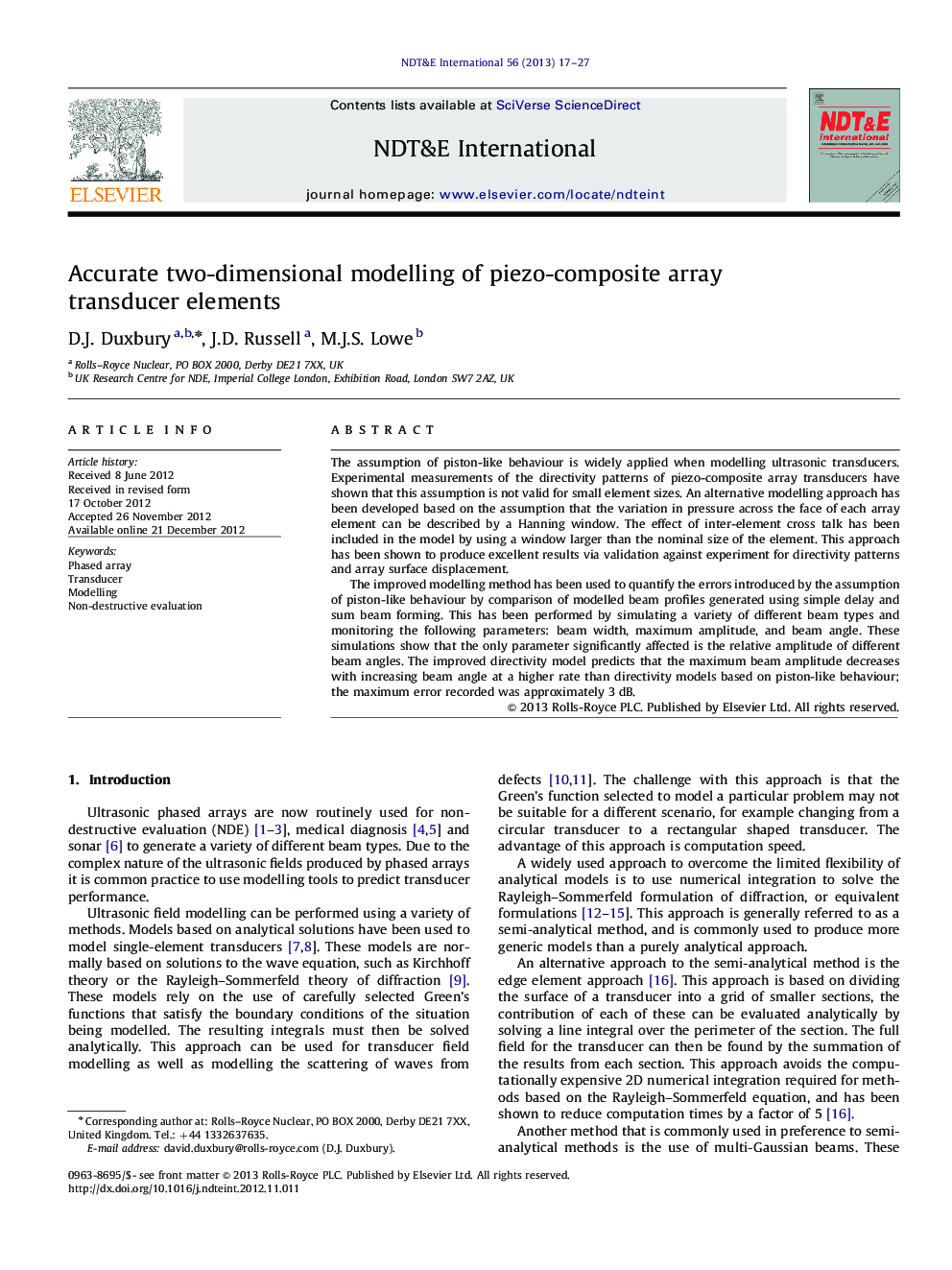| Article ID | Journal | Published Year | Pages | File Type |
|---|---|---|---|---|
| 295244 | NDT & E International | 2013 | 11 Pages |
The assumption of piston-like behaviour is widely applied when modelling ultrasonic transducers. Experimental measurements of the directivity patterns of piezo-composite array transducers have shown that this assumption is not valid for small element sizes. An alternative modelling approach has been developed based on the assumption that the variation in pressure across the face of each array element can be described by a Hanning window. The effect of inter-element cross talk has been included in the model by using a window larger than the nominal size of the element. This approach has been shown to produce excellent results via validation against experiment for directivity patterns and array surface displacement.The improved modelling method has been used to quantify the errors introduced by the assumption of piston-like behaviour by comparison of modelled beam profiles generated using simple delay and sum beam forming. This has been performed by simulating a variety of different beam types and monitoring the following parameters: beam width, maximum amplitude, and beam angle. These simulations show that the only parameter significantly affected is the relative amplitude of different beam angles. The improved directivity model predicts that the maximum beam amplitude decreases with increasing beam angle at a higher rate than directivity models based on piston-like behaviour; the maximum error recorded was approximately 3 dB.
► The assumption of piston like behaviour is widely applied when modelling ultrasonic transducers. ► Experimental measurement has shown that this assumption is not valid for small element sizes. ► A better approximation is to assume that the arrays surface displacement extends beyond the nominal size of the element. ► The resulting pressure across the element can be represented by a Hanning window which is larger than the nominal size of the element. ► When modelling an aperture of element the errors introduced by assuming constant displacement are minimal.
